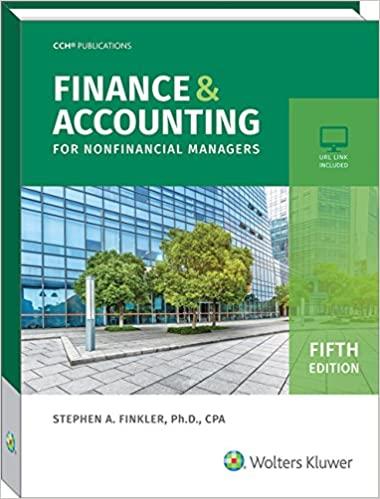Answered step by step
Verified Expert Solution
Question
1 Approved Answer
1 From the preceding information, prepare contributory income statements for the first year of operations for each of the three departments. Then combine departmental contributory

| 1 | |||||||||
| From the preceding information, prepare contributory income statements for the first | |||||||||
| year of operations for each of the three departments. | |||||||||
| Then combine departmental contributory incomes in a combined departmental | |||||||||
| operating budget format showing a combined total contributory figure, | |||||||||
| and deduct the undistributed, indirect costs to arrive at a budgeted | |||||||||
| income before depreciation, interest, and income tax. | |||||||||
| (In this problem, round all final numbers to the nearest dollar.) | |||||||||
| 2 | |||||||||
| Management is considering running an opening year special. By spending | |||||||||
| $10,000 in advertising and offering rooms at an average rate of $65 | |||||||||
| it is expected occupancy rate will increase to 71%. | |||||||||
| The increase in occupancy rate is expected to add 0.01 | |||||||||
| to the seat turnover rate for the dining room and coffee shop. | |||||||||
| The fixed wages expense and the other undistributed indirect expenses | |||||||||
| are not expected to change. | |||||||||
| Prepare a revised contributory income statement and | |||||||||
| recommend to management whether this would be a good idea | |||||||||
| or not. | |||||||||
Step by Step Solution
There are 3 Steps involved in it
Step: 1

Get Instant Access to Expert-Tailored Solutions
See step-by-step solutions with expert insights and AI powered tools for academic success
Step: 2

Step: 3

Ace Your Homework with AI
Get the answers you need in no time with our AI-driven, step-by-step assistance
Get Started


